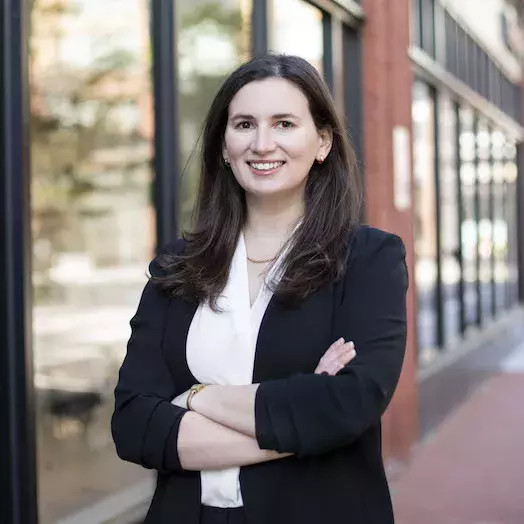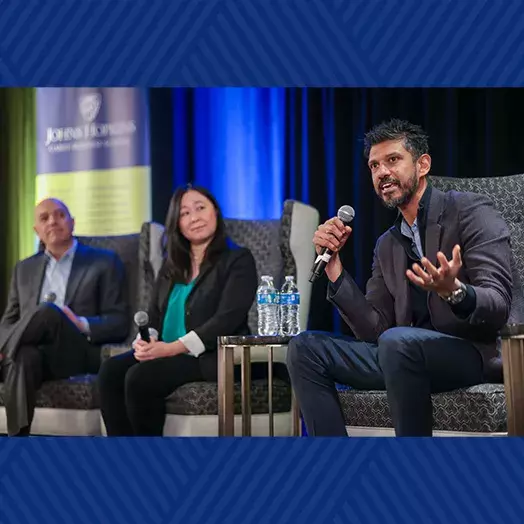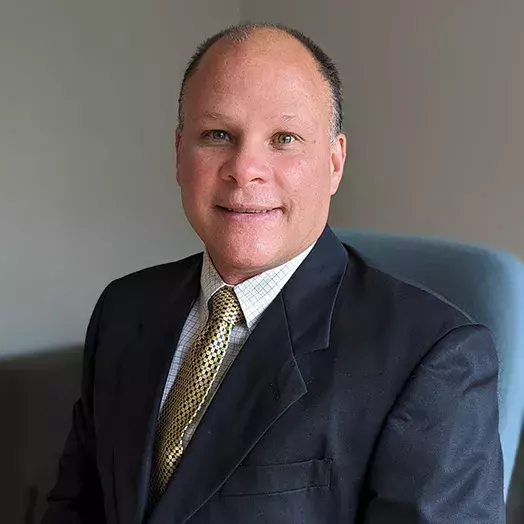
Alumna uses MA/MBA to design a career at Deloitte
Peggy Brennan (MBA, Johns Hopkins Carey Business School/MA in Design Leadership, Maryland Institute College of Art, ‘18) had her career in architecture mapped out.
When she secured a job at an architecture firm after college, her plan became a reality. But it wasn’t soon after that she realized a traditional architecture path wasn’t her passion. She wanted to use her design skills to solve her clients’ business problems before they broke ground.
“Design thinking gives you a process and series of tools and capabilities that can solve business problems. It’s really well suited for business problems because business problems are very complicated and sticky. They tend to involve a combination of people, processes, technologies, and policy,” Brennan said. “Applying a design approach can help you better understand the problems at hand and what kind of outcome you are solving for.”
To Brennan, using design thinking for business needs is “common sense.”
“A lot of people get a little shy with design thinking at first. But, apply common sense. You need to talk to the people and understand the context of the problem first to be able to solve and provide a good business solution,” Brennan said.
Finding the right degree (or two)
Brennan began looking for an alternative or dual-degree program that would give her foundational business skills—marketing, data analytics, product development—and the opportunity to hone her design skills.
“There has to be a combination of quantitative and qualitative skills. The design side of the MA gave me really great qualitative skills. The MBA side gave me the quantitative,” Brennan said.
“Right now, in my job, when I’m able to successfully mix those two together, it makes my case to get anything done so much stronger.”
Brennan enrolled in the dual-degree program— MBA from Carey Business School and Master’s in Design Leadership from the Maryland Institute College of Art.
“It’s an opportunity for you to experiment and leverage resources from two incredible institutions. And it’s great for an interdisciplinary learning experience. You’re going to be able to try a lot of things and flavors of things you wouldn’t typically be offered in other programs,” Brennan said.
Designing a career of innovation
Today she’s a senior consultant in Deloitte's Customer Strategy and Applied Design practice. While she says she never expected to work at a corporate firm, she was impressed by Deloitte’s emphasis on design.
“They reorganized the consulting side of the business a few years ago, and one of the outcomes was an emphasis on applying human-centered design, design techniques, and practices for digital and customer experience work. That’s what really excited me because they were using these processes and skills that I didn’t expect from a big consulting firm,” Brennan said.
Today, Brennan manages a team that develops products to advance clients’ missions. Her day-to-day includes conducting research to inform strategies for new or existing products. Most of her projects are for the federal government. It was already familiar territory for her, since her MBA/MA capstone project involved working with the Census Bureau on strategies to address issues of trust to increase public engagement.
Brennan sees her work as an extension of her training at Carey and MICA. As for the next stage of her career, she said, “I want to pursue more innovation. How do organizations establish innovative cultures to help push the boundaries of what they typically were doing? Whether that’s developing pilots of emerging technologies or changing the culture and being willing to fail, it’s all about enacting change through innovative processes.”


